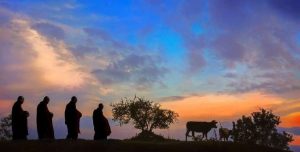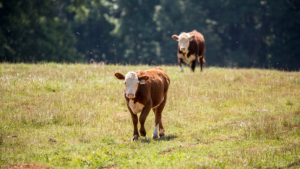Daniel Aitken is the CEO and publisher of Wisdom Publications, a non-profit charitable publisher of books, podcasts, and online courses on contemporary and classical Buddhism, mindfulness, and meditation. For my column this month, I sat down with Daniel to find out more about the publication of an insightful new book by the Buddhist monk, scholar, and meditation teacher Venerable Bhikkhu Anālayo, Rebirth in Early Buddhism and Current Research.
Buddhistdoor Global: What is the mission of Wisdom Publications?
Daniel Aitken: The original impetus for Wisdom Publications was to share the teachings of Lama Yeshe. Lama Yeshe would teach in Kathmandu, and those teachings would be recorded by students and passed around, and that was sort of the beginnings of what would become Wisdom Publications. Therefore, we have a long tradition with Tibetan Buddhism, but at some point His Holiness the Dalai Lama encouraged us to publish across different traditions. So we are very proud of publishing Bhikkhu Bodhi’s translations of the Pali Canon, and Bhante Gunaratana’s Mindfulness in Plain English, for example. These books have really influenced so many thousands of people on their Buddhist path. There are many many other books, of course; I’m just naming two that are outside the Tibetan tradition.
BDG: What attracted you to the book Rebirth in Early Buddhism and Current Research?
DA: I think it’s a fascinating topic for one. Ven. Bhikkhu Anālayo is a scholar of the highest order. So if you put a fascinating topic in the hands of an amazing scholar, you get a great, enjoyable, intellectually fascinating read, and that is what this book is. The book asks the reader to think about things. The good thing about this book is that it looks back at early Buddhism, which is Ven. Anālayo’s specialty. But then he also looks at modern cases, what he calls current research, modern cases of xenoglossy—where someone can speak or recite in a language that they were never taught. He looks at these different types of evidence for rebirth.
BDG: To define our terms, what are we saying when we talk about “early Buddhism”?
DA: Ven. Anālayo has a way of talking about early Buddhism. We have the Pali Canon, which is the result of an oral lineage that was written down after some time. As I understand it, he says that through analyzing these texts, one can gain an understanding of the centuries after the Buddha, before anything was written down, on what early Buddhism was like.
We definitely know Buddhist materials were written down in Ashoka’s time, but the earliest extant piece of Buddhist text that we have is from the Dunhuang caves. The oldest printed book in existence is a Buddhist book, the Diamond Cutter Sutra, printed some 1,000 years ago. Throughout history, printing books has provided a significant role in the preservation and dissemination of the Buddhist teachings.
BDG: What is Wisdom offering with the publication of Rebirth? What is distinct about this book?
DA: I think it clarifies an important concept for Buddhists. When you start to talk about rebirth, you are starting to talk about how one can know whether something is true or not. What role does rebirth play in the Buddha’s teachings? And what did rebirth mean at the time when the Buddha was teaching and shortly after?

Many people say that the Buddha was simply a product of his time; he taught rebirth because it was the prevalent belief of his time and therefore we don’t have to take it too seriously. Ven. Anālayo is saying that there were actually great masters in India at the Buddha’s time who were materialists—Charvakas—who believed that all there is are the four or five elements, and those people debated with the Buddha’s disciples. So the Buddha could have easily taken the materialist view. Therefore, we shouldn’t be so quick to dismiss the Buddha’s intellect and willingness to check and challenge the beliefs of his time. He was challenging the beliefs of his time, so it doesn’t seem in line with his character that he was just taking rebirth for granted, and I think that’s an important point. That is just one of the points Ven. Anālayo makes.
BDG: It doesn’t fit the trajectory of using the mind in the way that the Buddha teaches, even if it was the dominant view of the time. As Buddhists, we don’t accept what we are told—that’s the whole point; we have our own discrimination and discernment.
DA: The dominant view of the time was that princes should become kings. The Buddha questioned that, so why wouldn’t he question other dominant views of the time? So the reasoning that the Buddha didn’t teach rebirth, that seems factually incorrect. Some people say we don’t know anything about the Buddha; we don’t have any historical facts about him so let’s put that to one side, assuming we are talking about the Buddha of the Pali Canon, for example.
It seems you can’t with a straight face say that he didn’t teach rebirth. Some people do, but you can’t, and this is another point Bhikkhu Anālayo makes in the book.
BDG: Moreover, clearly the Buddha would have been aware that these subjects were already being debated in the Jain tradition, in the Brahmanical traditions, so everybody was talking about these issues during that historical period.
DA: For sure the Jains were also challenged by the Charvakas, so it seems it wasn’t just a one-time occurrence that the Buddha’s disciples bumped into these materialists.
BDG: What did you learn from this book?
DA: I learned those two things. I was also quite amazed by the accounts of people who said that they could remember past lives. Some of these things were quite amazing for me to read. For example, people undergoing surgery who seem to be able to report what was happening while they were under anesthetic, these sort of accounts. It’s very fascinating to me, showing there was no activity in the brain that we would normally assume is required for that kind of perception, yet these people came back and talked about these things that happened as if they saw them, and that’s just a mystery. I have questions, like was it just a reconstructed memory, or something like that? You know I’m always happy to play the skeptic, yet some of these accounts are quite convincing.


BDG: How did Ven. Anālayo research this?
DA: Ian Stevenson from the University of Virginia has done a lot of research, so I think he worked with that material. He also had his own interactions with various people and their stories, like Dhammaruwan, who is the boy that could chant Pali, so Venerable already had a connection with them, already being in the Buddhist world.
BDG: Who is the audience for this book?
DA: I think that it’s applicable to all traditions, and whether—if you are a Buddhist or not—you are interested in these ideas of what happens when we die. And who isn’t, really? I think this is a good contribution around the conversation of what happens when we die.
BDG: Will Rebirth be translated into other languages?
DA: Yes, that will happen in the future.
BDG: Is there anything you would like to add?
DA: Yes! I work with many Buddhist teachers and I was extremely impressed with Ven. Anālayo’s ability to balance his practice with his writing and his research. He spends five days a week in retreat and two days working, and still he’s more productive than all of us! I think that’s a nice thing for people to hear. You don’t have to run off into the woods, but he finds that his meditation practice enables him to be more productive, not less productive. Normally I find myself thinking that I don’t have enough time to do so much meditation because I’m so busy, and his view is if you’re busy you need more meditation!
BDG: It’s one practice . . .
DA: It’s one practice, absolutely. And I think that’s one of his most important messages. That’s not something he says much, but he leads by example, just working with him is inspiring in that way.
See more
Rebirth in Early Buddhism and Current Research (Wisdom Publications)











